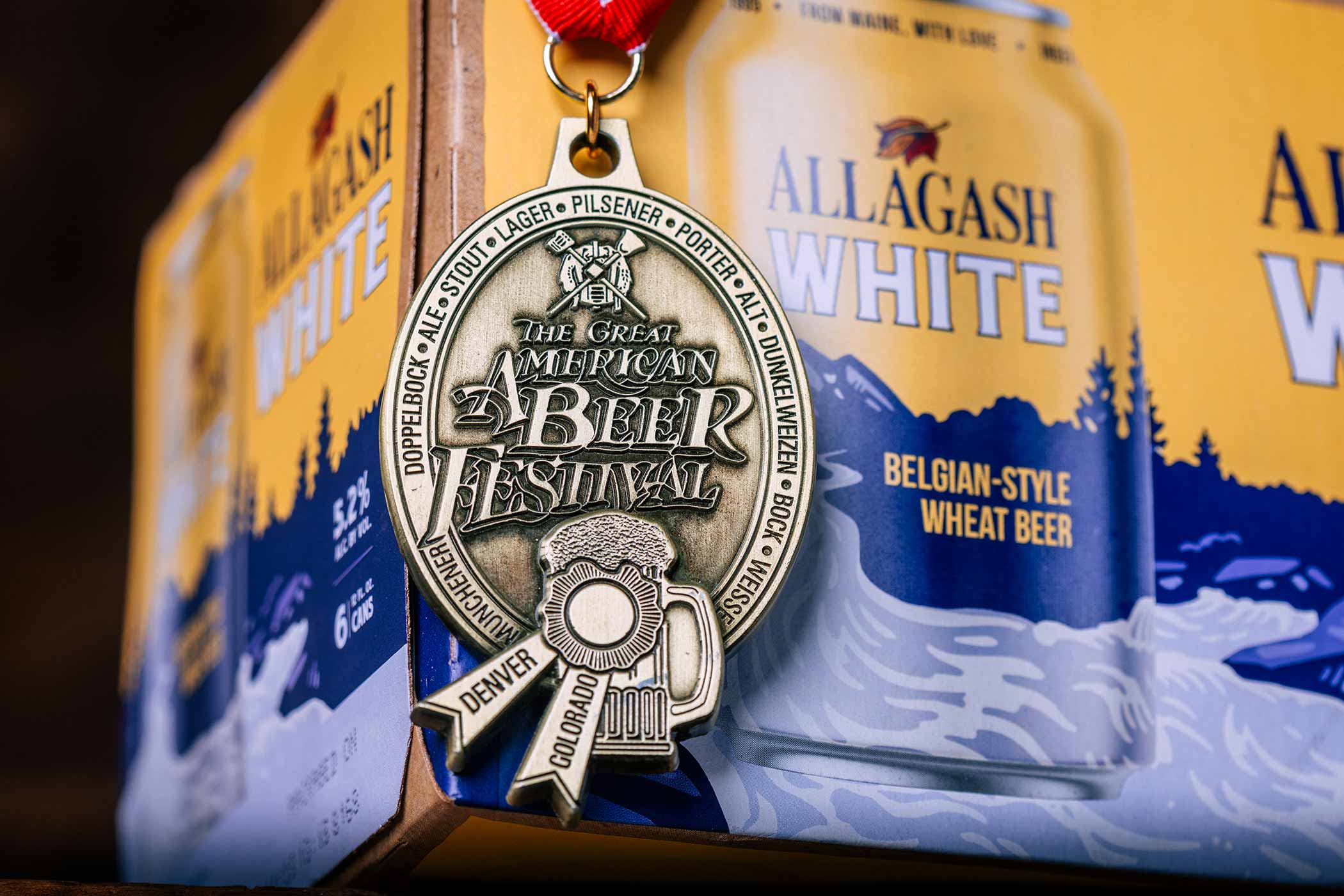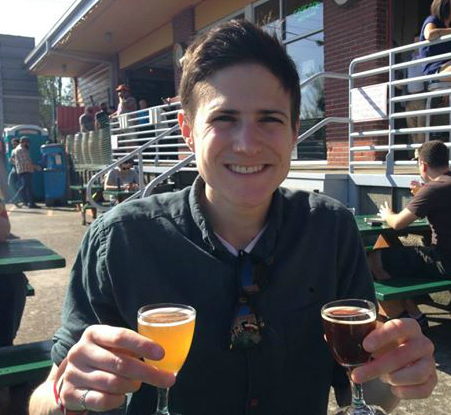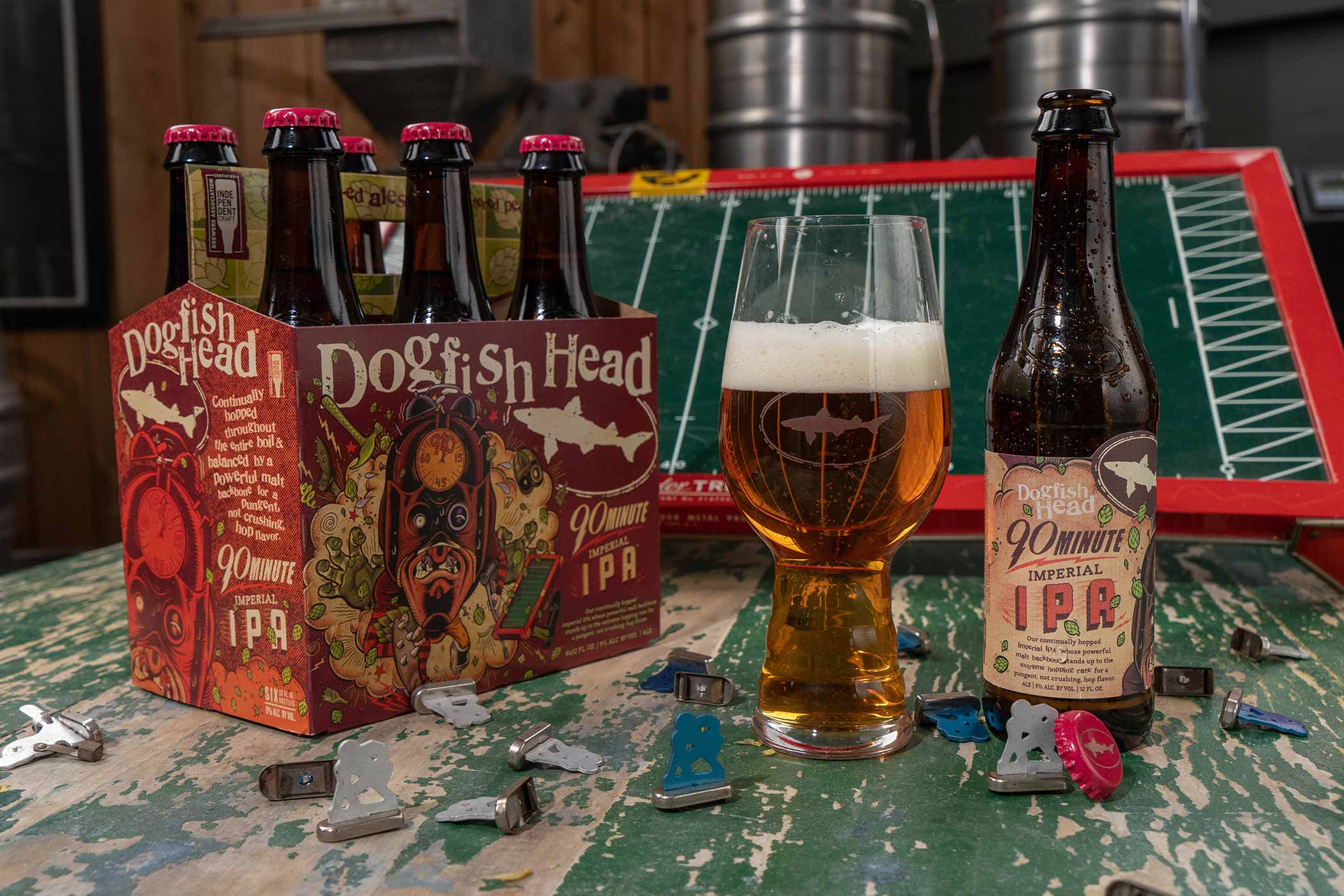Shop
11 Things You Didn’t Know About Allagash White
Top Stories:
Ten gold medals, three silver ones, and five bronze across the Great American Beer Festival, World Beer Cup, and European Beer Star, Allagash White is the most-awarded wheat beer in the world today. But when Allagash Founder Rob Tod first brewed this Belgian-style witbier in 1995 and poured the cloudy beer out at bars, people asked him, “What’s wrong with it?”
That’s right. One of the most iconic beers in America, Allagash White, almost had to wave the white flag. But, Tod tirelessly backed this beer for ten years. Eventually, after a decade of grinding, Tod’s witbier wonder started to turn heads.
It’s a good thing Tod and Allagash Brewmaster Jason Perkins stuck to their guns because thirty years later, this little Belgian-style wheat beer has earned its place in the pantheon next to greats such as Sierra Nevada Pale Ale, Anchor Steam Beer® (RIP?), and Boston Beer Co. Boston Lager, for instance.
One could argue that White wouldn’t be what it is today without those years of blood, sweat, and beer.
Nothing is black and white. So, as Allagash celebrates its thirtieth anniversary in 2025, let’s look at the dark days that led to the light…we mean White.
Rob Tod’s First Job Was Washing Kegs
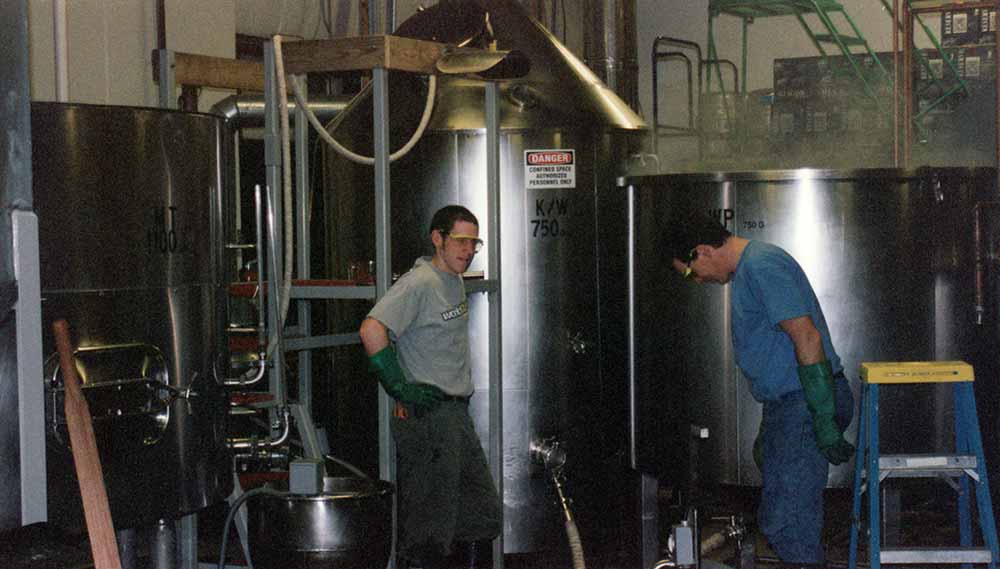
Photography courtesy of Allagash Brewing Co.
A geology major who graduated with “no idea what I wanted to do,” Tod says that he was scared to death of ending up in a job that bored him.
Always a tactile person, Tod often spent summers working construction, welding, or restoring boats. He told us he’d spend hours as a kid fixing things like vacuums, lawnmowers, or hair dryers, taking them apart and putting them back together.
Unsure of his next move, Tod headed to Colorado, where he worked in construction and back-of-the-house restaurant jobs. After a year, he felt he needed to settle down, so he returned to Vermont.
When Tod pulled his van into town, he called a friend who worked at Otter Creek Brewery, a small local taproom.
That very day, his friend said his boss had put out the call for a part-time keg washer.
“I liked drinking beer,” laughs Tod. “Maybe I could get paid and get free beer.”
Tod showed up the following day at 8 a.m., walked in the doors, and his life changed forever.
Tod Knew Within a Couple of Hours, He Was Born to Brew
“Instantaneously, almost from walking in the door,” recalls Tod, “I knew I was going to make beer for the rest of my life.”
The brewery called out to Tod. When he saw all those pipes, valves, and noisy steam coming out of tanks, he felt right at home.
Remember, this is a kid who repaired household appliances on his own and chose to spend his summers getting his hands dirty.
In fact, he fell in love so hard and fast that, within just a year, Tod set out on his own, determined to start his own brewery.

Photography courtesy of Allagash Brewing Co.
Tod Built Allagash Out of Old Dairy Equipment and Sixteen-Hour Work Days
After two weeks at Otter Creek, Tod walked into the office of the brewery’s founder, Lawrence Miller. “This was how much conviction I had,” says Tod. “I told him I want to start a brewery.”
Tod didn’t feel comfortable opening in Otter Creek’s backyard, so he assured Miller he’d move a state or two away. But he asked to learn as much as possible over the next year.
“He probably thought, Rob, after you spend a year here, the last thing you’ll want to do is start a brewery,” laughs Tod, who did everything at Otter Creek from washing kegs to spending time on the packaging line to working in the brewhouse.
Tod spent one year to the day working at Otter Creek—July 1st, 1993, to July 1st, 1994. On July 2nd, he set out on his own to open Allagash.
“I didn’t know what it would look like or where it would be,” says Tod, “but I made up my mind pretty quickly to open my own brewery.”
Moving a state away to Maine, Tod worked on a shoestring budget to get Allagash off the ground.
He bought used dairy tanks, installed the drainage and trenches in the floor, and cut and welded all the steel in the brewhouse himself.
Allagash’s first mash tun? That’s a used dairy tank converted to make beer. The hot liquor tank? An old dairy tank. And the heat exchanger? Well, that came used.
Tod admits the fermenters he bought new, but pretty much everything else he cobbled together.
“I was pretty cheap at the time!” says Tod, who worked sixteen-hour days for a solid year, seven days a week.
“I took six days off in the first year and a half,” he shares. “I worked sixteen-hour days Monday through Saturday and eight hours Sunday.”
Through sweat, grit, and long days, Tod built his brewery around pretty much one beer…and one beer only.
Why a Witbier? And Only a Witbier?
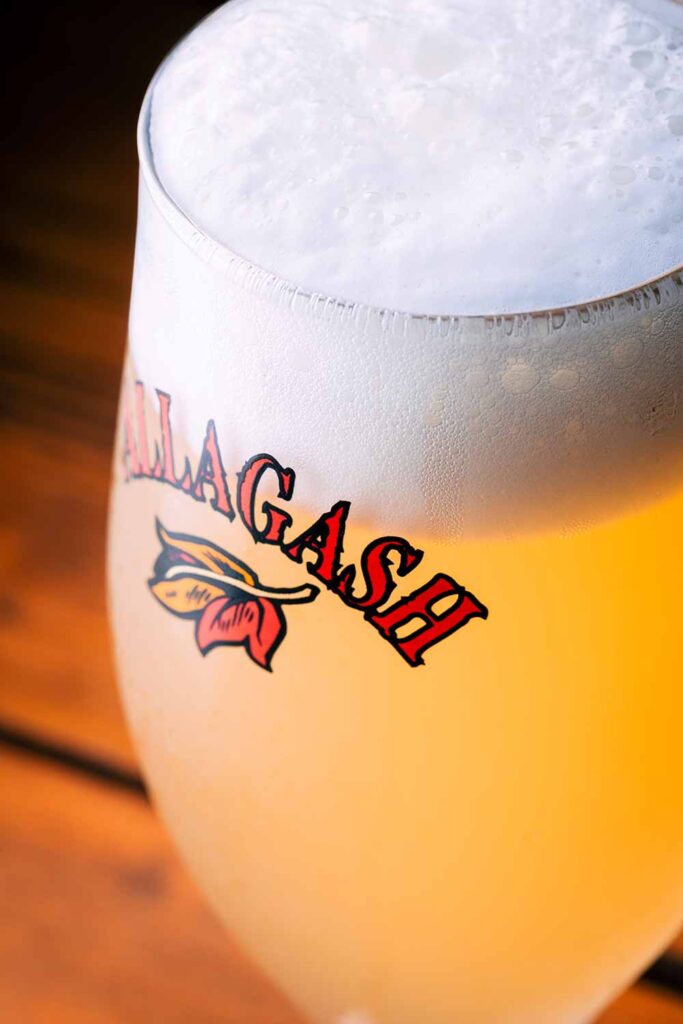
Photography courtesy of Allagash Brewing Co.
When Tod launched Allagash, he had one beer in his portfolio—Allagash White, a Belgian witbier.
Looking back on the beer landscape in the early 1990s, British ales, German and Czech imports, and Pacific Northwest pale ales dominated.
Belgian beers…you couldn’t find too many of them.
“Everyone was into Shipyard, Geary’s, Gritty’s [Mcduff’s] English styles using Ringwood yeast—these styles dominated the New England beer scene at the time,” says Mike Dickson, the manager and now-partner of The Great Lost Bear, a forty-six year-old bar in Portland, ME, that was one of the first to pour Allagash White.
Tod saw an opportunity.
Planning to be a one-person band and run lean that first year, Tod knew he had to keep things simple.
“I wanted to start with just one beer only, draft only, and only in the local Portland, ME, market,” he explains.
Tod first tried Belgian-style beers while working at Otter Creek. Employees at the brewery would collect beers from their travels. After accumulating twenty or thirty different beers, they’d all stay after work on a Friday and Saturday and try all the various styles—things like Belgian witbiers.
“I was really intrigued by the Belgian beers people brought,” says Tod. “From such a small geographical area, Belgian brewing culture is unbelievably unique and diverse…it’s mind-boggling.”
Belgian witbier stood out to Tod.
“No one was drinking cloudy beers back then,” he chuckles.
Witbiers had different flavor profiles and aromas and a unique yeast strain, but at the same time, it was “one of the most sessionable styles I ever tried,” says Tod.
Not one to shy away from a challenge, Tod wanted Allagash to stand out.
“Why bust my ass for a year working sixteen hours seven days a week only to make something people could already get,” says Tod. “I wanted to make something unique.”
Allagash White Includes Coriander, Curaçau Orange Peel, and a Secret Ingredient
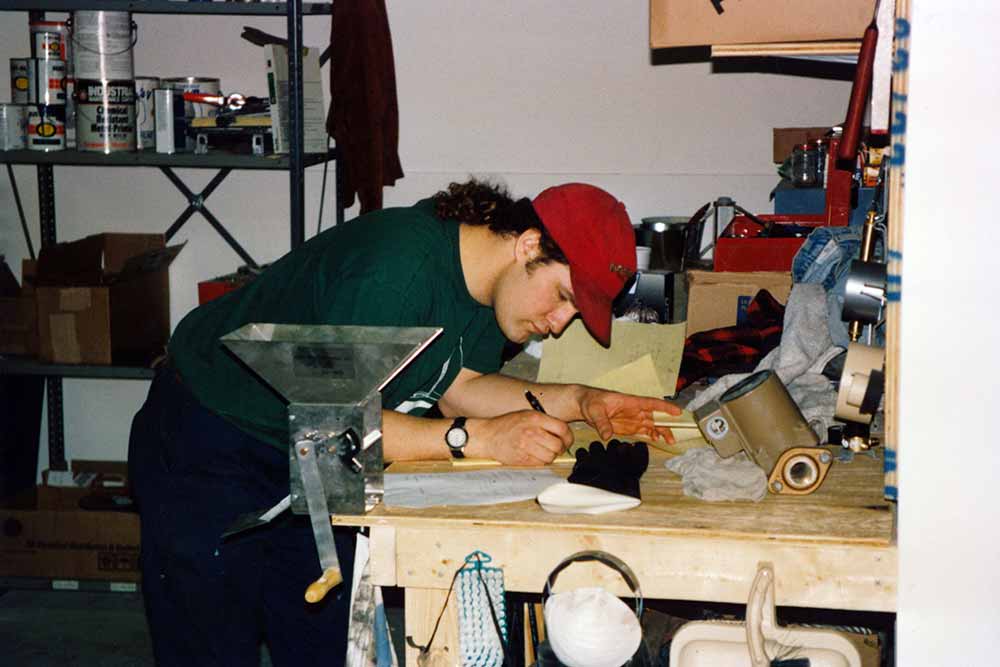
Photography courtesy of Allagash Brewing Co.
Tod spent hours and days, and around four test batches to perfect his recipe for Allagash White. One of the most complex parts of brewing this style at that time was that there was no one to call. “If I were doing a British-style beer or an IPA, if I had a problem, I could pick up the phone and call twenty or thirty different people,” he explains. “But with this Belgian witbier, there was no one to call because no one was making these beers.”
While he has openly shared that White includes fresh coriander and curaçau orange peel, he has kept the other secret spice hushed.
And nothing has changed!
“That’s what keeps beer interesting to me,” says Tod. “If you try a beer and immediately figure it out, you won’t be drawn back to it.”
He adds, “One of the things that has drawn people to Allagash White is the complexity, the balance, and all the subtle flavors.”
What Tod would share though is that Allagash White is currently brewed with around thirty-six percent of locally grown grain. “That is largely made up of local raw white wheat, along with local malt and oats,” he says. “We haven’t really changed the recipe at all since 1995, except for when we built more local grain into it in 2016.”
Almost (Never) Waving the White Flag on White for Over a Decade

Photography courtesy of Allagash Brewing Co.
You’d never know it now, but Allagash White didn’t exactly come flying out of the gate.
“When I opened, I couldn’t give it away,” says Tod, who would pour the cloudy beer out at accounts only for the bar owner to ask him what’s wrong with it.
A few local accounts like The Great Lost Bear poured it. “I tried an Allagash White the very same day the first keg arrived,” exclaims Dickson. “I fell in love with it right away. We have always been advocates for supporting local, and Allagash was certainly no exception!”
But beyond some local love, Tod calls that first ten-year period a grind and “nothing but an uphill battle.”
Good friends, other brewers, and folks in the industry constantly told him to make a more accessible beer because he would never survive making “weird beers.”
“I’d say this is as accessible as beer gets,” laughs Tod. “But no one saw it that way for a good decade.”
After the first eight years, Tod admits that he doubted whether the brewery, built around a core witbier, would work. But he never gave in, only plowing forward.
“It would have taken the bank to come in and say no more, we’re pulling the plug,” says Tod, admitting he’s pretty bull-headed.
Ironically, Tod keeps a framed letter on his wall from a bank that pulled Allagash’s loan five years into the business. “It’s a constant reminder of our humble beginnings and struggles in the early years,” he shares. (Don’t worry; Tod says another bank came in shortly thereafter and got him a loan refinanced at a lower rate!)
Today, Allagash Is the Most Awarded Wheat Beer in the World
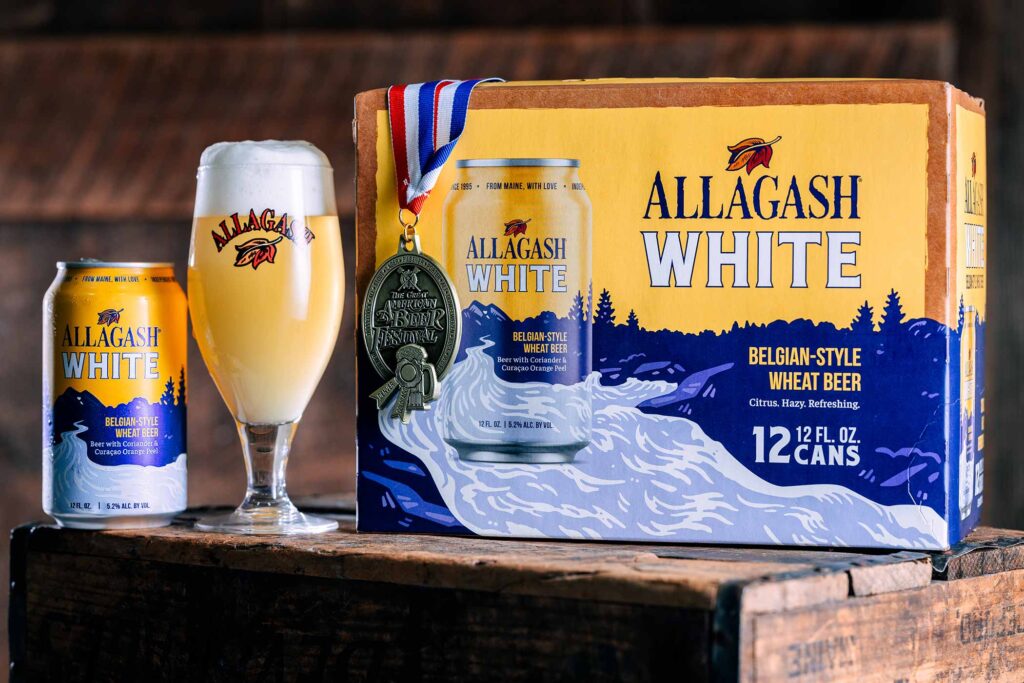
Photography courtesy of Allagash Brewing Co.
It’s inevitable to ask what changed. Around 2005, Allagash’s little witbier started to catch fire.
Tod says he could list many reasons, but at the top would be quality.
“We were doing everything we could within our limited means with just old dairy equipment to make the best beer,” says Tod. “We started to get a reputation for quality and consistency.”
Allagash’s Founder admits that it probably didn’t hurt that Blue Moon came on the scene, too. No other large-scale wheat beer had been around since Allagash started.
Plus, Tod is probably being modest. He and Allagash Brewmaster Jason Perkins hit the pavement hard during the early 2000s.
Because White wouldn’t sell at home, Tod and Perkins took their beer into as many states as possible. Basically, Tod welcomed any state that agreed to distribute Allagash into the brewery’s footprint. However, that decision eventually propelled Allagash to mainstream success.
“We needed to go into new markets because we couldn’t sell our beer,” said Perkins, who became Allagash’s brewmaster almost by chance, stumbling in one day when he saw Allagash was hiring and shooting the shit with Tod.
That was twenty-six years ago.
Needless to say, they hit it off.
After ten years of hitting the road, people’s perceptions and palates changed. Somewhere between 2006 and 2007, consumers came to understand and appreciate the nuances, spices, and appearances of Belgian-style beers.
Today, at The Great Lost Bear, Allagash White continues to be in the top three for draught sales among the bar’s sixty taps, according to Dickson, who estimates the bar moves through close to two half kegs of Allagash White a week. “That is impressive after all these years where I have seen so many come and go from the top five,” he says.
Slowly, Allagash White became Tod’s namesake, evoking the family, passion, caring, and innovation that Allagash now counts as its core values.
“A bunch of things percolating for years all of a sudden came together,” says Tod, “and led to what ended up being a fifteen-year stretch of a ton of growth.”
Allagash White Has Always Been Eighty Percent of the Brewery’s Volume
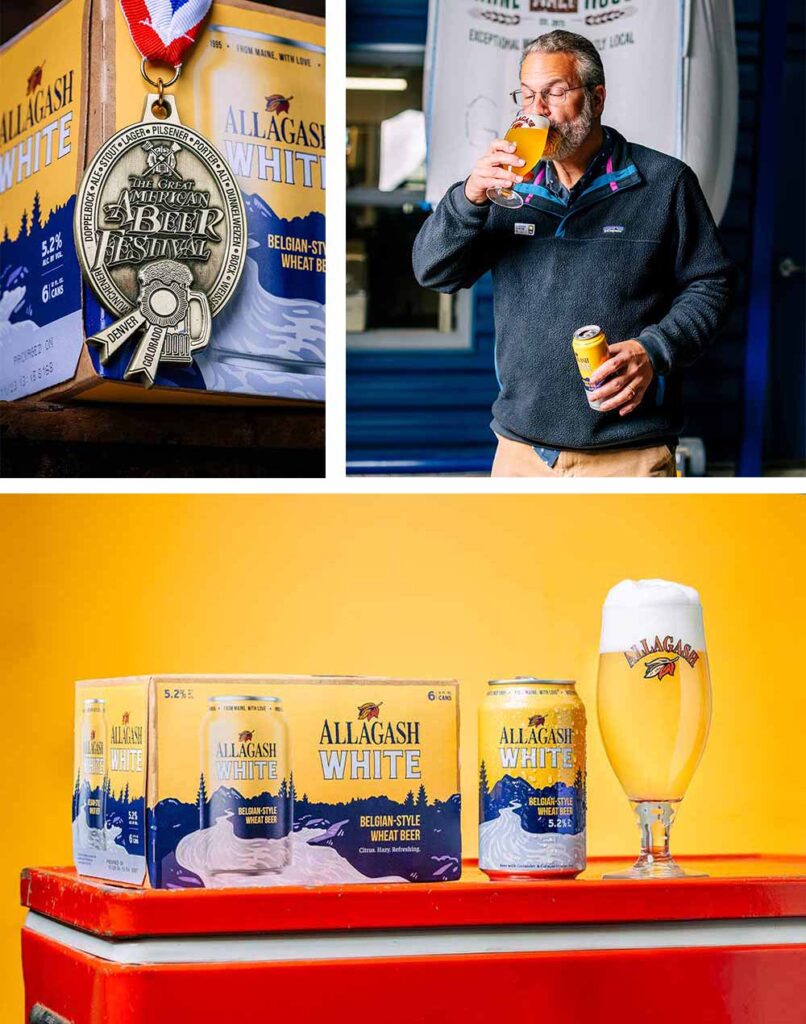
Photography courtesy of Allagash Brewing Co.
Never waving the white flag on White has paid enormous dividends for Allagash.
Today, White makes up eighty percent of the brewery’s volume and continues to be Allagash’s best-selling beer, with 80,000ish barrels sold across all SKUs last year. “I don’t think White has ever sunk below eighty percent of our volume,” says Tod. “Not once!’
The growth of White has given Allagash the flexibility to do things Tod never thought possible.
Like offering a robust employee benefits program, for instance, which, if you stay with the company for five years, includes a trip to Belgium on Allagash. After ten years, you can take a one-year sabbatical.
Last year, Allagash gave a significant amount back to the local community through a strong philanthropy program.
Since 2016, Allagash has committed to buying one million pounds of Maine-grown grains, a feat they achieved in 2021. They’re now up to over two million pounds.
“Those are the great things [White’s] volume delivered,” says Tod. “That’s the reason I’m coming to work every day.”
Allagash White Today Tastes Exactly Like It Did Thirty Years Ago
With limited resources and equipment back in the day, Tod says he got this tricky beer right five to ten percent of the time.
“Now we nail it one hundred percent of the time,” he says. “And it tastes exactly like it did thirty years ago when I nailed it.”
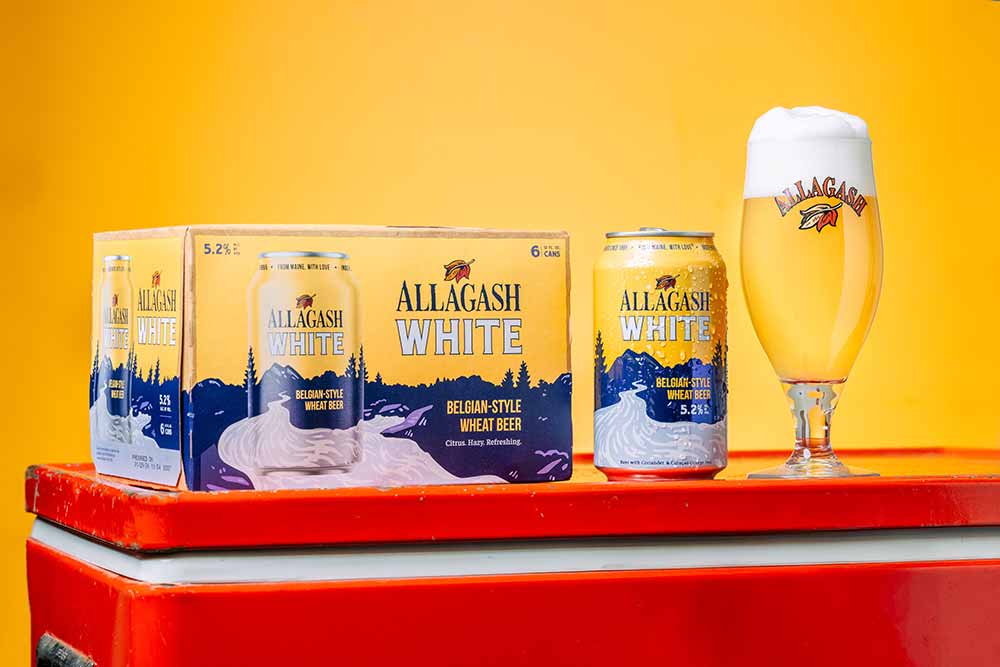
Photography courtesy of Allagash Brewing Co.
If Tod Sees You Drinking a White, He’ll Buy Your Beer
No joke.
For instance, if you’re at The Great Lost Bear, where Dickson says Tod pops by frequently to say hello. You can even sit in the exact stool Tod sat on the day the first pint of Allagash White was served. They have a plaque on that very seat. “Corny,” Dickson says, “but cool!”
Tod never takes White’s success for granted.
A few days before we spoke, Tod was drinking at a horseshoe-shaped bar in town when he noticed a couple drinking Allagash White.
“I get excited when people order [Allagash White] because it was a struggle for so long,” he shares. “I’m buying them that beer!”
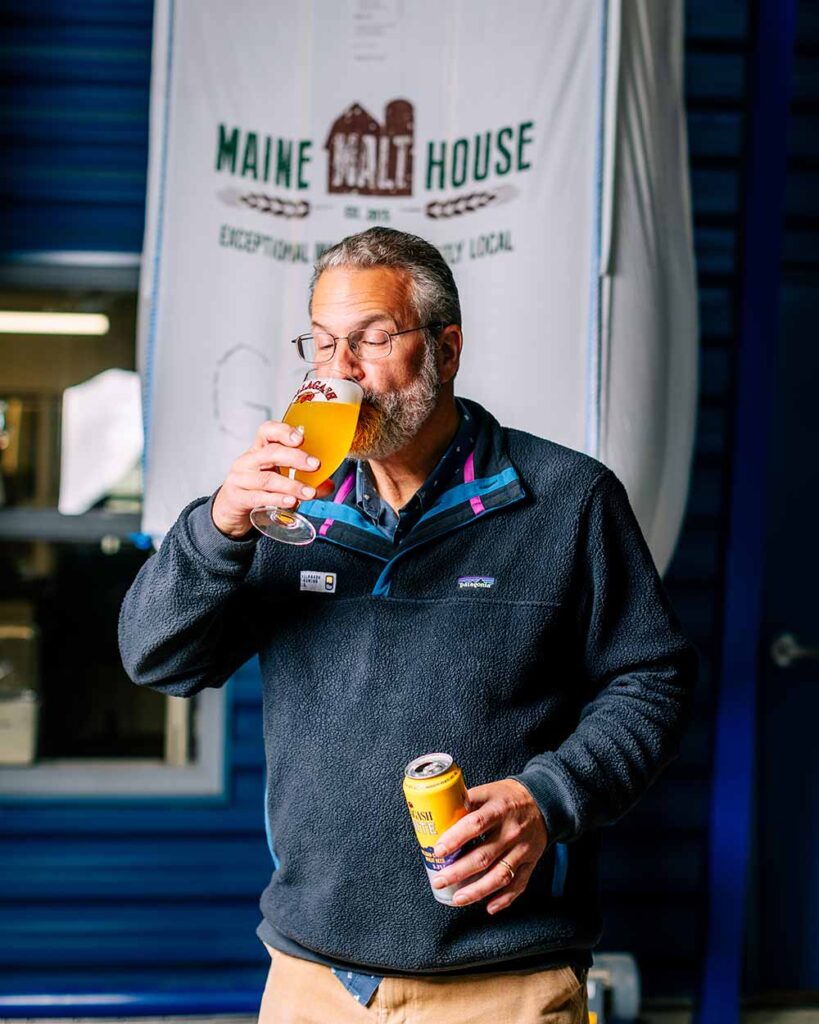
Photography courtesy of Allagash Brewing Co.
Tod Has Drunk…A Staggering Volume of White in the Last Thirty Years
For Tod, the way White tastes varies depending on the occasion.
Whether that’s sharing one with coworkers after the work day, sitting at a horseshoe-shaped bar and drinking with folks in the community, or downing one with dinner at home. “The beer expresses itself differently in those different settings because of the complexity,” says Tod, who estimates he’s drunk a staggering amount of Whites throughout his lifetime.
“It would scare me to see that total number,” he laughs.
But regardless, when he’s at the brewery or an event, he says the crew knows to just hand him an Allagash White.
“I don’t waver,” says Tod, noting that he wasn’t drinking one during our chat because he didn’t have time to grab one after his last meeting. “I always go to the White.”

